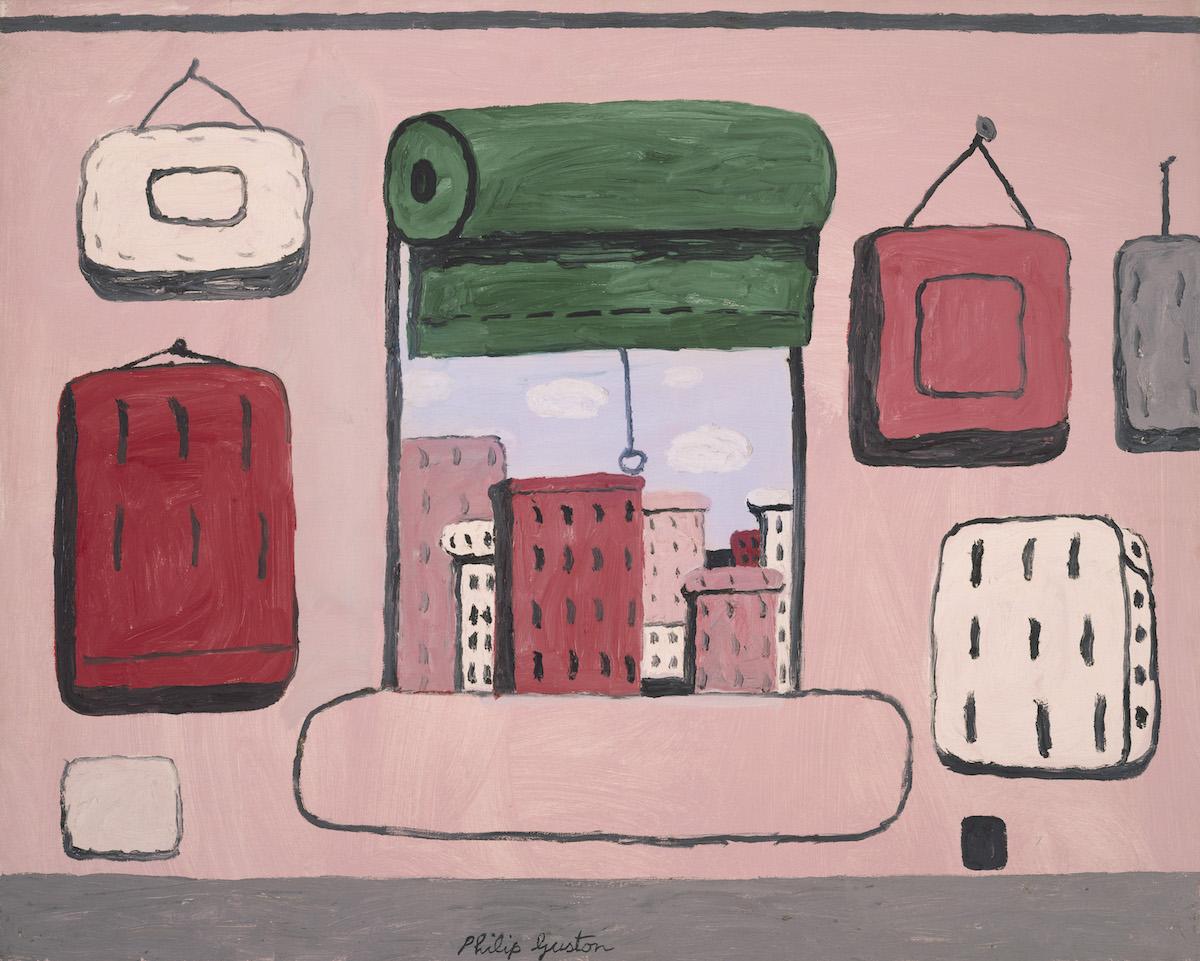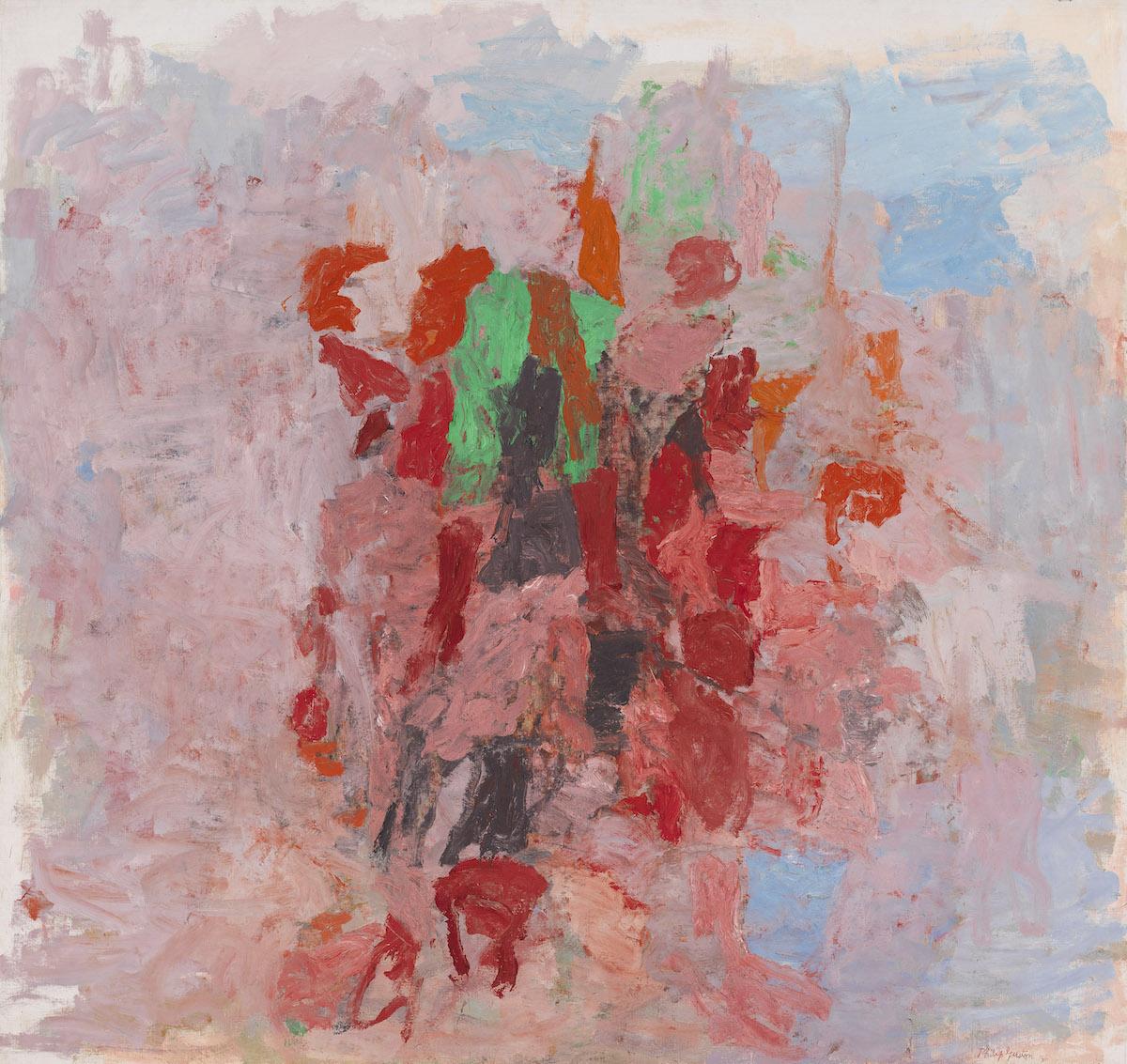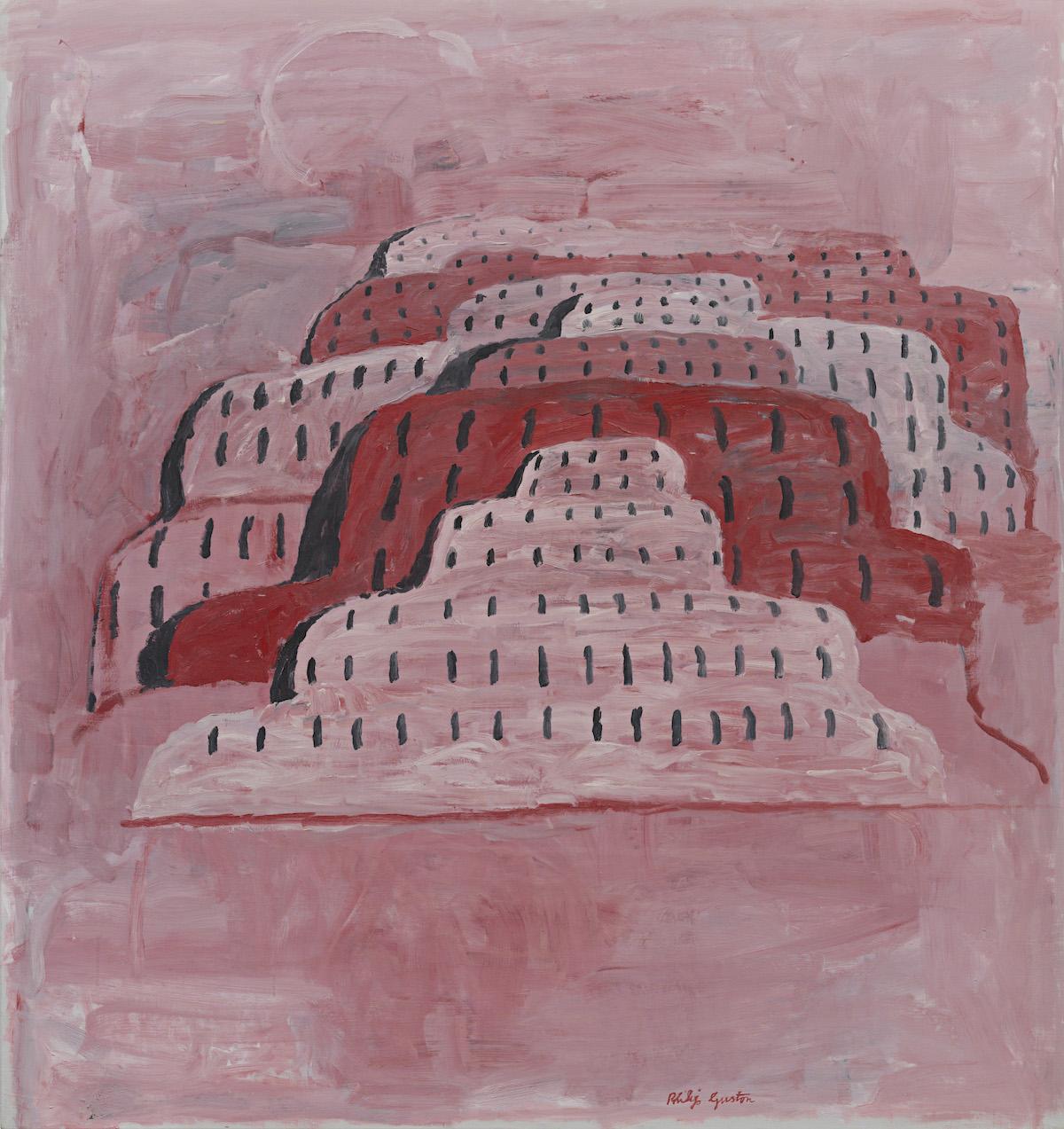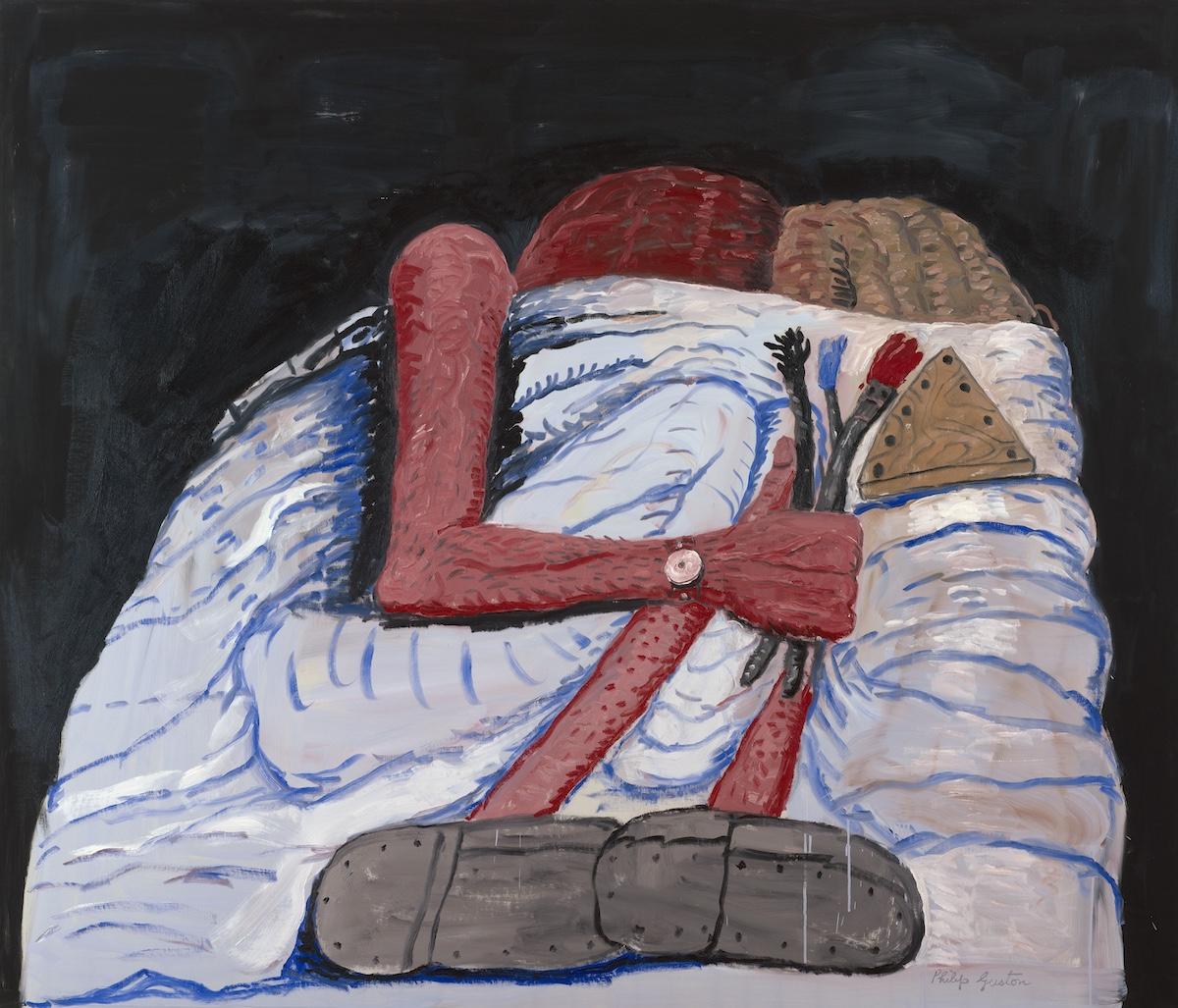Adding to this imagery, Guston began to paint primarily with pink and red tones. Scalding pinks, scathing reds – fleshy cartoons in bubblegum pink and blood red. Seen up close, one becomes aware of the torment he felt as he painted. The colors are in-your-face with thick impasto brushstrokes. The work is fresh, honest, and immediate.
Choosing these colors and the cartoon-like images incited much criticism at the time. Critics slammed him. Robert Hughes in Time magazine wrote in 1970: “We are left with a group of sumptuously painted canvases, sometimes witty, occasionally moving, and for the most part caricaturally blunt. As political statement, they are all as simple-minded as the bigotry they denounce.
Today, people take offense with Guston’s white-hooded figures, offering trigger warnings; “Emotional Awareness.” This is the topic of the pink card you take before you even enter Philip Guston Now at the Boston Museum of Fine Art. The exhibit had been postponed because museums also on the tour – National Gallery of Art, in D.C; Tate Modern, in London; Museum of Fine Arts, Houston – were afraid of audience reaction. Shock? Guston’s relevance today is shocking. Our fraught times appear to be worse.




























